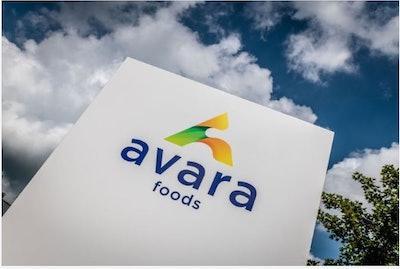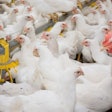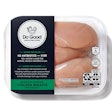
Earlier this year, Avara Foods published a roadmap, which set out how the U.K. poultry processor and its growers will cease contributing to the excess phosphate in the River Wye within two years.
In a recent update on progress towards these at goal, the firm reports that its facilities do not contribute directly to this pollution in the river’s catchment area. This is a result of all its poultry being reared indoors, and the birds’ manure is not stored on farm.
According to the company, sources of phosphate pollution in the river may be direct, indirect, or through diffused pollution. Release of sewage is an example given of direct sources, indirect sources would include run-off from nearby land into the river.
The firm’s roadmap set out Avara Foods’ journey towards improved sustainability. Beginning with published environmental commitments — including a target to achieve net zero by 2040 — the firm published its first progress report in December of 2022.
“Supply chains are being monitored more and more closely,” the company’s agricultural director John Reed told Hereford Times. “We want to reduce our carbon footprint we want to reduce any suggestion of pollution or emissions where we can.”
Anaerobic digestion (AD) pledge
Previously, all poultry litter from the company’s facilities is used to fertilize crop and grazing land.
Among Avara Foods’ 2025 environmental goals is to end the application of manure from its poultry farms to land in the River Wye catchment area. Instead, the firm has announced the manure will be used in anaerobic digesters to produce power, carbon dioxide, and biofuel.
Any surplus manure used in the Wye area will have to comply with higher standards of soil management. Avara is currently working on defining these conditions.
At the same time, the firm is supporting two AD projects. One of these will not be completed for another two years. However, the other one is taking around 120 metric tons (mt) of the material each week. By September of next year, the target is 600mt.
Since the start of this year, Avara Foods reports that its litter volume is down by 30% as the result of the AD, farms closures, and exports of material outside the river catchment area.
Other uses of poultry manure included in the roadmap are litter burning followed by application outside the area, sales to third-party AD companies, and application to its own land but with enhanced management standards.
In its report, Avara Foods notes that as well as human waste, there are several significant sources of phosphate from agriculture. Among these are other livestock (including free-range poultry), artificial fertilizers, and animal manure brought into the area.
At the start of this year, the company pledged to stop polluting the River Wye.
More on Avara Foods
With annual slaughterings of 234 million birds, Avara Foods is among the largest poultry companies in Europe, according to WATTPoultry.com’s Top Poultry Companies survey.
Processing broiler chickens and ducks, the company was formed in 2017 as a joint venture between Cargill and Faccenda Foods.
One month ago, Avara Foods announced a plan to close its turkey plant in Abergavenny, Wales. Following consultations with the workforce, operations were expected to cease there in the autumn/fall.

















